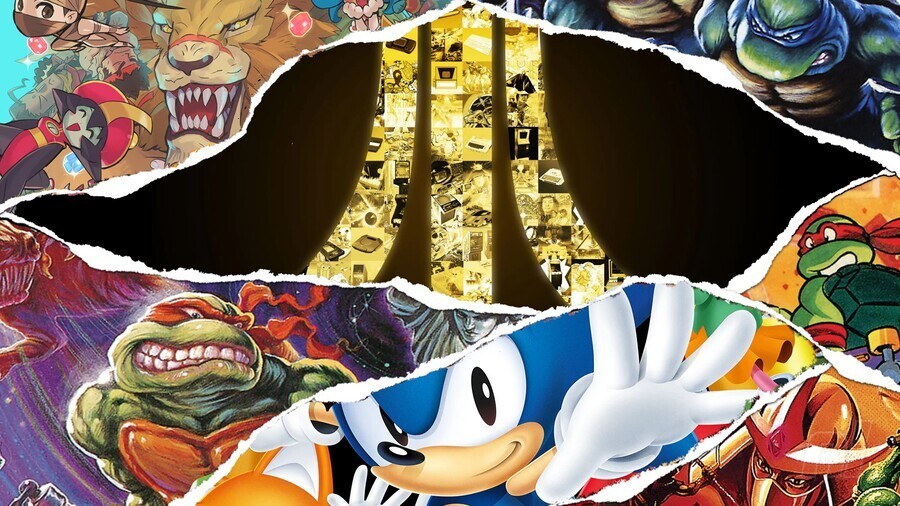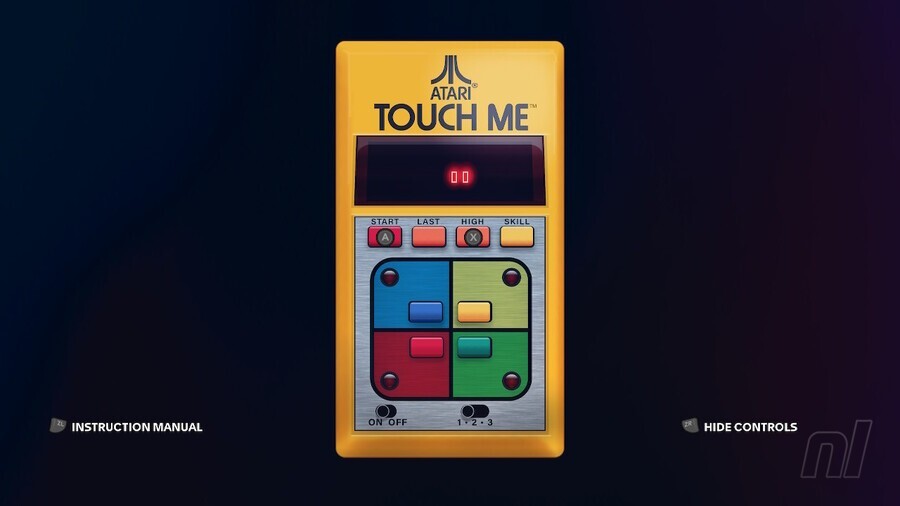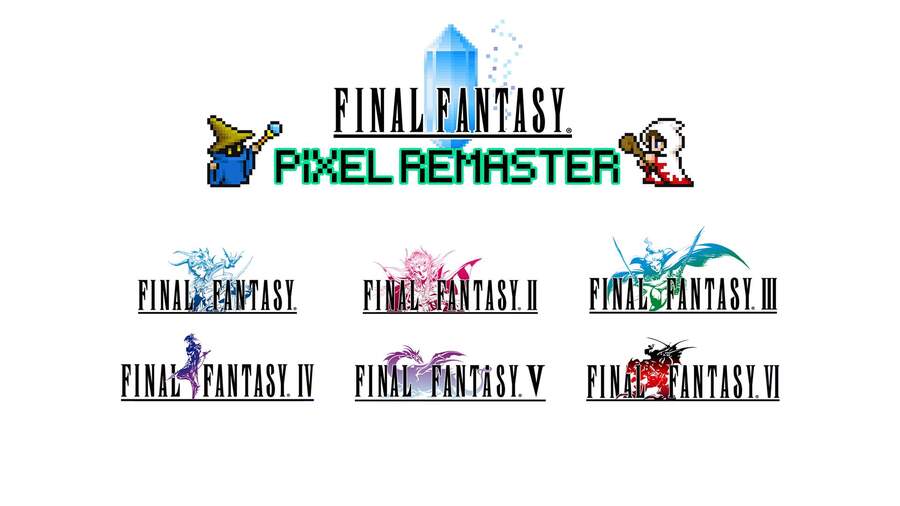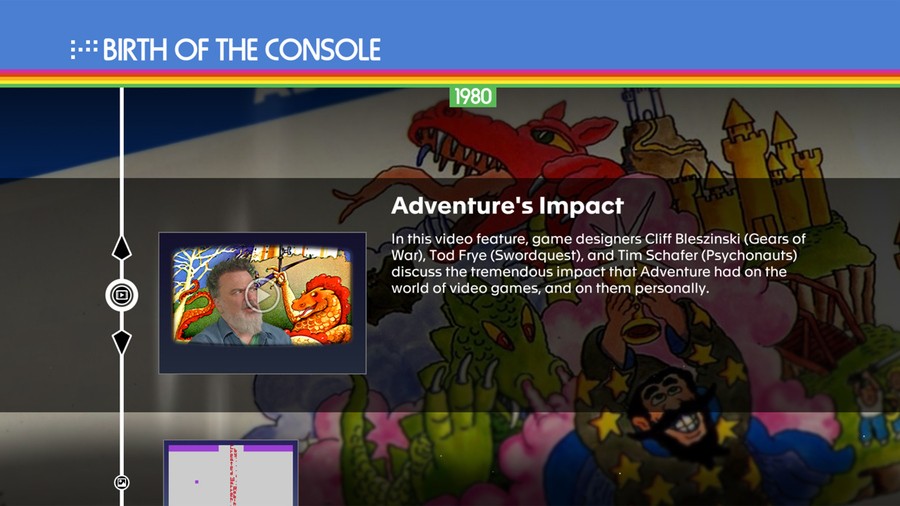2022 Was A Watershed For Companies Taking Retro Compilations Seriously

Soapbox features enable our individual writers and contributors to voice their opinions on hot topics and random stuff they’ve been chewing over. Today, Gavin is encouraged to see how old games have been getting the appropriate TLC on Switch this year…
We’ve had plenty of retro compilations and collections come to consoles over the past few years, some of them mightily impressive, others incredibly lacklustre. While 2022 saw plenty of companies repackage old releases into pleasant nostalgia parcels, it also felt like the beginning of a new phase, with big names in the industry finally starting to realise the value — beyond the mere monetary — of investing in their history and letting talented developers present it with the care and attention it deserves.
Digital Eclipse’s Atari 50: The Anniversary Celebration was the retro compilation flagbearer this year, of course. I’ve already covered just what a landmark release it is to my mind, but it’s worth reiterating what an incredible job that team did by presenting formative titles in such an engaging way, with the ‘supplementary’ material taking the driver’s seat for a journey through video game history. The package cleverly acknowledges that while Pong, Asteroids, and co. are titans of the medium, 21st-century players absolutely need context to inform them why they’re so revered and iconic. Atari 50 presents that context front and centre in a narrative that’s so engrossing, the games themselves become the footnotes.
That sounds disparaging, but it’s far from that. The emulation is second to none, as you’d expect from these developers, but the acknowledgement that it’s the ‘bonus’ features that set collections like this apart from a folder of ROMs and MAME, coupled with the slickness of the presentation, feels revelatory. These historical segments aren’t just the primary draw for enthusiasts but also the key to attracting curious younger players who want to know more about an era of video gaming before their time. That’s the genius of Atari 50, and the reason it needs supporting and championing.
Digital Eclipse is the common thread that ties the other ‘gold standard’ retro release of 2022 to the Atari collection: Teenage Mutant Ninja Turtles: The Cowabunga Collection. Say what you like about Konami and the disregard it seems to have for video games versus Pachinko machines, but looking at its output on Switch over the past few years, I’d argue it actually deserves praise for how it’s been treating its retro output. There’s much more that could be done with its envious back catalogue, but enlisting companies like M2 for help with the Castlevania Anniversary Collection is smart, as was letting Digital Eclipse handle this year’s Turtles package, which just recently received an update adding online multiplayer to Turtles in Time and a host of other enhancements. We’ve also got the Suikoden I&II HD Remaster coming out in 2023. The company may be dropping the ball in other areas, but at least Konami is partnering with the right people. Hopefully, as relationships strengthen and trust is built, we’ll see more collaborations of this calibre in the future.

It’s not all just Digital Eclipse, though. Capcom’s addition of rollback netcode for Capcom Fighting Collection might seem elementary and obvious, but would we really have been surprised if the collection launched with local multiplayer only, or multiplayer only available for a couple of the featured games? That every title can be played online is hardly ‘above and beyond’, but it still demonstrates an investment and desire to do these collections right. Any chance we can get The Disney Afternoon Collection on Switch sometime soon?
Elsewhere, Pac-Man Museum+ became the 42-year-old pill-munching mascot’s best collection to date, and the Wonder Boy Collection did a fair, if unfussy, job of presenting four entries of Westone’s series — and the upcoming digital release of the 21-game-strong Anniversary Collection (previously physical-only) will address the stinginess of current eShop release, which was the main point of contention in our review.
Not all of 2022’s retro compilations were perfect, of course. Sonic Origins managed to irritate the 2D Sonic purists even more than Frontiers. It is a verifiable scientific truth that there can never be enough ways to own and play Sonic 2 and Origins was positioned as the ‘definitive’ way to play the formative 2D titles – especially Sonic 3 & Knuckles. However, it fell frustratingly short of that sales pitch, with bugs and a confusing DLC offering fanning the flames of fan dissatisfaction.
There’s a fair argument that given the age and popularity of these games — not to mention the meticulousness and passion of the contracted developers involved in the project — Sega should be able to get something like this right after 30 years. Sonic Mega Collection on the GameCube was already an excellent showcase of the company’s ability to compile Sonic history nicely! But in Origins, the museum section was limited mainly to character art and marketing materials, with no interviews here to shed light on the mysteries of development.
Sega seems content to let the fan community share fascinating insights into the inner workings of these games, but given the stories that have surfaced over the years, it would be thrilling to get the ‘official’ behind-the-scenes perspective on the cross-continental in-fighting, the technical challenges, developmental friction, the involvement of Kings of Pop, and all that. Get Naoto Ohshima, Hirokazu Yasuhara, Yuji Naka (okay, perhaps not Yuji Naka at the moment), Judy Totoya, Masato Nakamura, Mark Cerny, and others interviewed on camera now. Rieko Kodama passed away earlier this year, and these people won’t be around forever to set the record straight. Fans own these games a dozen times over already, but there’s enormous value in the warts-and-all ‘Making Of’ story itself. Packages like Atari 50 show how behind-the-scenes narratives don’t have to be presented as a drab and formulaic six-part Netflix documentary series, but interactively in a way that takes advantage of the medium.
Even taking into account Origins’ faults, missed opportunities, and missing music tracks, it still managed to be my most-played Switch game of the year. I had a great time with the additional challenges and Tyson Hesse’s animation work is sublime. It just felt like so much more could have been done; ‘good enough’ for games like this really isn’t good enough. Add the fact that Sega delisted other versions of the games included in Origins and it’s clear the company has a lot of catching up to do.
Code Mystics and SNK’s Neo Geo Pocket Color Selection Vol.2 boasted an impressive roster of ten titles presented serviceably, including Card Fighters’ Clash, Mega Man Battle & Fighters, and Biomotor Unitron. But considering all those are available separately on the eShop too, King of Fighters: Battle de Paradise and Ganbare Neo Poke-Kun not being localised meant that an opportunity was lost to introduce a couple of fascinating curios to a larger audience. Their inclusion ‘as is’ remains welcome, and the budget and resource realities of localising a pair of relatively niche NGPC titles must make it a tough proposition. Nonetheless, the feeling that an unadorned ROM was being thrown into an emulator is something that the best compilations this year did away with. Nintendo Switch Online has become the area for that, and it feels like compilations such as the SEGA Genesis Classics Collection aren’t going to cut it in the future.

Beyond the obvious avenue of PC emulation, there are so many ways for even the most clueless gamer to play those classics. You’ve got bespoke solutions like the beleaguered Polymega, neat little Raspberry Pi boxes, mini consoles like the Mega Drive II Mini, modded original hardware souped-up with new connections and mod-cons,and Everdrives, the aforementioned Switch Online catalogue, and a host of other ways to play old favourites, legally and otherwise.
Still, for all but the most dedicated retro enthusiasts — those retrophiles with plenty of space for CRTs and all the peripheral devices you need to make old consoles play nice in the modern living room — you just can’t trump the convenience of being able to play classics on your current console. Give people a half-decent option that adds value to the base experience and they’ll buy games they already own or could access for free. Digital Eclipse has really raised the quality bar this year and I hope we’ll see more and more companies opening up their vaults for similar retrospective projects, while the people and materials still survive.
After wrapping up Atari 50, my mind immediately went to Nintendo, perhaps the company with most Disney-esque level of brand management in the entire industry. It feels incredibly unlikely that it would open its archives for a team like Digital Eclipse to explore without suffocating the project and insisting on framing every moment on its own PR-sanitised terms. You’re not going to get warts-and-all admissions of insane crunch, chain-smoking in office cubicles, or Miyamoto grinding team morale to dust in pursuit of his vision.

Ironically, Atari’s incredible decline since the ’90s — with its change in ownership and transition to more of a lifestyle brand groping after unsavory trends than a serious video game company these days — means there’s a cachet to having an officially-licensed product acknowledging historical drug use in its developer interviews. Having that level of honesty in a Nintendo product would simply never happen. There’s also likely a cultural factor in play here, too; the bold, brash American approach versus the silent, mannered hierarchy of many a Japanese company. As far removed as modern Atari is from the OG company and legacy, it’s somehow appropriate that Atari is the firm to break the retro collection mould like this.
Perhaps there is yet time for Nintendo and other formative Japanese video game companies. The planned opening of a museum-like ‘Nintendo Gallery’ is encouraging, but the vast majority of Nintendo fans aren’t going to be able to visit the Kyoto facility when it does eventually open. The vast ‘gigaleak’ from a fews years back suggests that Nintendo does indeed keep everything, and glimpses into the company archives that games like Mario Maker afforded us revealed a treasure trove of material for potential archivists. There’s never been a healthier appetite for vintage gaming ephemera.
The clock is ticking, though. Significant figures in the company getting up there in years. Last year we lost Masayuki Uemura, the designer of the Famicom, and other figures such as Takaya Imamura have moved on from the company in recent times. The Iwata Asks archive is a terrific catalogue of developer interviews (darn it Nintendo, where’s my coffee table book already?!) but the last of those was published over seven years ago in June 2015, shortly before Satoru Iwata’s death. Now is the time to speak to the people who built modern Nintendo and document their stories before it’s too late. Shigeru Miyamoto is 70. Just putting it out there.
Ultimately, despite the sterling work this year in the field of retro compilations on console, there will be no shortage of tired, clumsy collections hastily assembled to cash in on the ageing gamer’s nostalgia. But having shown that there’s a better way, I’m hoping beyond hope that the Capcoms, the Konamis, the SEGAs, and — yes — the platform holders themselves, take a look at Atari 50 and see the appetite and potential for such quality packages. All eyes will be on the upcoming console version of the Final Fantasy Pixel Remaster collection next year, and we’d like to think that the time of a company as storied and illustrious as Square Enix putting out remasters of treasured classics plastered with a patently ghastly font is well and truly in the past.
Perhaps it’s best not to get hopes up, but the encouraging signs this year indicate that big publishers might finally have noted the benefit of doing retro collections the way they should be done: properly.











